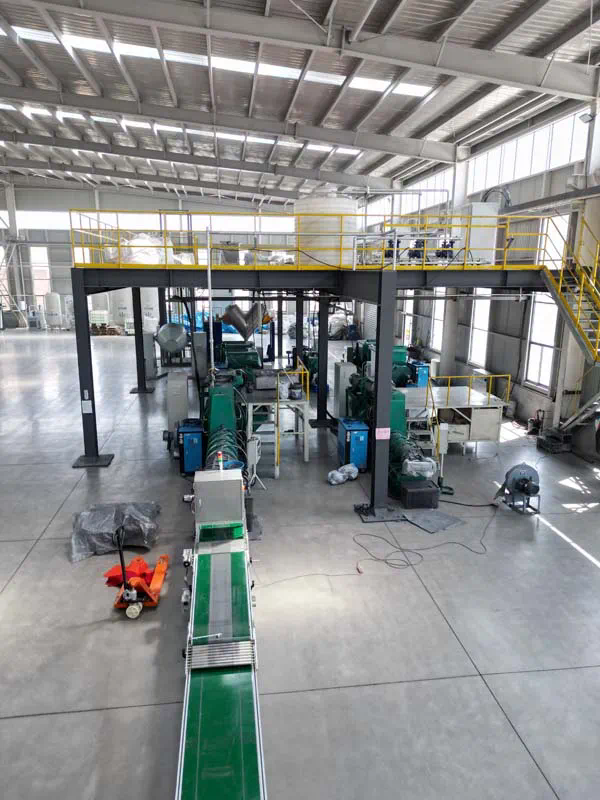Study on the Application of Silicon Carbide in Smart Grids
The integration of advanced materials such as silicon carbide (SiC) holds significant promise for enhancing the efficiency, reliability, and performance of smart grids worldwide. This article delves into the various applications, benefits, challenges, and future prospects associated with the utilization of SiC in smart grid technologies.
Introduction to Silicon Carbide
Silicon carbide (SiC) is a compound semiconductor material with unique properties that make it highly suitable for applications in power electronics, particularly in the context of smart grids. Its superior thermal conductivity, high breakdown electric field strength, and ability to operate at high temperatures and frequencies make it an ideal candidate for enhancing the efficiency and reliability of power transmission and distribution systems.
Benefits of Silicon Carbide in Smart Grids
The adoption of SiC technology in smart grids offers several compelling advantages over traditional silicon-based solutions. Firstly, SiC devices exhibit lower switching losses, enabling higher operating frequencies and reducing overall system energy losses. This efficiency improvement translates into reduced energy consumption and operational costs for smart grid operators.
Secondly, SiC devices can operate at higher temperatures without significant performance degradation, which allows for more compact and lightweight designs of power electronic modules. This thermal robustness is particularly advantageous in smart grid applications where space and weight considerations are critical, such as in substations and power converters.
Furthermore, SiC-based power electronics offer enhanced reliability and durability compared to silicon devices, thereby improving the overall uptime and maintenance intervals of smart grid infrastructure. This reliability is crucial for ensuring continuous and uninterrupted electricity supply to end-users, even under demanding environmental conditions.
Applications of Silicon Carbide in Smart Grids
The integration of SiC technology spans various critical components within smart grids, including:
Power Converters and Inverters
SiC-based converters and inverters play a pivotal role in transforming and regulating electrical power within smart grid networks. These devices leverage SiC’s high switching speeds and efficiency to minimize losses during power conversion processes, thereby optimizing energy transfer and distribution across the grid.
High-Voltage Direct Current (HVDC) Transmission Systems
HVDC systems are increasingly adopting SiC-based components due to their ability to handle high voltages and frequencies with minimal losses. SiC devices enable HVDC systems to achieve higher efficiencies over long-distance power transmission lines, facilitating the integration of renewable energy sources and improving grid stability.
Electric Vehicle (EV) Charging Infrastructure
SiC technology is also revolutionizing EV charging infrastructure by enabling faster charging rates and higher power densities. SiC-based chargers deliver enhanced efficiency and reliability, supporting the widespread adoption of electric vehicles and contributing to the electrification of transportation within smart grid ecosystems.
Smart Grid Monitoring and Control Systems
The deployment of SiC-based sensors and control devices enhances the real-time monitoring and management of smart grid operations. These sensors provide accurate measurement data and enable intelligent grid management strategies, such as predictive maintenance and demand-response optimization, to improve overall system efficiency and reliability.
Challenges and Considerations
Despite its numerous benefits, the widespread adoption of SiC in smart grids faces several challenges that warrant attention:
Cost Considerations
The initial procurement costs of SiC-based devices are generally higher than their silicon counterparts, primarily due to manufacturing complexities and material expenses. However, ongoing advancements in production techniques and economies of scale are gradually reducing the cost differential, making SiC technology more economically viable for smart grid applications.
Standardization and Compatibility
Ensuring compatibility and interoperability between SiC devices and existing grid infrastructure remains a critical consideration. Standardization efforts are underway to establish common protocols and specifications for SiC-based components, facilitating seamless integration into diverse smart grid environments.
Reliability and Performance Optimization

While SiC devices offer superior reliability, optimizing their performance under varying operational conditions and environmental factors requires continuous research and development. Addressing issues such as thermal management, electromagnetic interference, and long-term reliability will further enhance the operational lifespan and efficiency of SiC-based systems in smart grids.
Environmental Impact
The environmental footprint of SiC manufacturing processes and disposal methods is another area of concern. Efforts to minimize energy consumption during production and maximize recyclability at the end of the product lifecycle are essential for ensuring the sustainable deployment of SiC technology within smart grid infrastructures.
Future Outlook
Looking ahead, the future of SiC in smart grids appears promising, driven by ongoing innovations and advancements in material science, manufacturing techniques, and system integration capabilities. Key areas of development include:
Advanced Material Designs
Continued research into novel SiC material compositions and structures aims to further enhance device performance, reliability, and cost-effectiveness for smart grid applications. Innovations such as wide-bandgap heterostructures and advanced packaging solutions hold the potential to unlock new levels of efficiency and functionality in SiC-based power electronics.
Integration with Renewable Energy Sources
The integration of SiC technology with renewable energy sources, such as solar and wind power, will play a pivotal role in achieving sustainable energy goals. SiC-based converters and inverters enable efficient energy conversion and management, supporting the seamless integration of fluctuating renewable energy outputs into the smart grid infrastructure.
IoT and Edge Computing
The proliferation of Internet of Things (IoT) devices and edge computing technologies presents opportunities cdn cgi email protection for leveraging SiC-based sensors and controllers in smart grid monitoring and control systems. What are silicon silicide specialty ceramics These innovations enable real-time data analytics, predictive maintenance, and autonomous grid operations, enhancing overall system resilience and responsiveness to dynamic grid conditions.
In conclusion, the application of silicon carbide (SiC) technology represents a transformative opportunity for advancing the efficiency, reliability, and sustainability of smart grid infrastructures worldwide. By harnessing the unique properties of SiC-based devices, smart grid operators can optimize energy management, improve grid stability, and accelerate the adoption of renewable energy sources. While challenges such as cost, standardization, and environmental impact remain, ongoing research and collaboration across industry and academia promise to drive continued innovation and deployment of SiC technology in shaping the future of smart grids.
https://supplychaininterview.com/